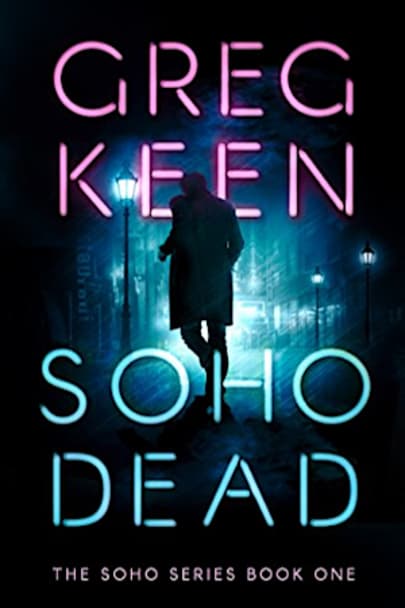Kenny Gabriel is three years away from turning sixty, has forty-three quid in the bank and is occasionally employed to find people who would rather not be found. Broke, clientless and depressed, he knows things can’t get much worse. Then he’s summoned to the office of London media magnate Frank Parr, whose daughter, Harry, is missing—and there’s ten grand on the table to get her back.It’s a lot … back.
It’s a lot of money, and God knows Kenny needs the cash. But he and Frank have a history he’d rather not revisit. Kenny worked for him in the seventies, when Frank was the head of a Soho magazine empire and owner of an infamous nightclub. And Kenny might still be working for Frank now—if he hadn’t witnessed his boss brutally torturing another employee.
Kenny suspects taking this job is a mistake, and he’s probably right. Because while he may be done with the past, the past is far from done with him.
more



Imagine a protagonist PI (hardly a private investigator, just a skip tracer), a geriatric contender, scrawny. short, anything but intimidating, living from one day to another, not knowing when his electricity would be cut off or be kicked out of his squalid apartment.
Who is also deeply depressed, medicating himself with booze (okay, excessive quantities of liquor), mostly, cheap Monarch and the occasional beer, instead of the anti-depressant prescribed by his female shrink, drifting like a rudderless ship for the last 40 years after he left his job he loved. Not exactly Joe Mannix, Magnum, or Jim Rockford, is he? But this what cinema noir Kenny Gabriel is, the star of Greg Keen’s Soho Series, of which Soho Dead is the first installment.
Yet, he is charming, determined and somehow always able to get the truth out of people who are willing to be subjected to his questioning, or at least a trace of it. Not to mention the sexual favors of a beautiful woman many years his younger.
It is the disappearance of the daughter of his ex-employer, Frank, a small-time pornographer turned print media magnate during a fierce takeover battle that would make his company and him a major player in the newspaper business at the national level. Kenny didn’t hear from him for 40 years after he left his employ under circumstances that we get to know somewhere in the middle of the story. But let’s just say it here that it wasn’t something that either one of the two should is now proud.
So, why him and now, instead of a major security/investigating agency powered by scores of agents and unlimited resources. The fishy excuse is that first, the father is not even sure that Harry, his daughter, disappeared. Second, because of the delicate circumstances of publicity, surrounding the buyout. Contrary to Gabriel best judgment he accepts the assignment because he learned from experience that the father always gets his wish and never accepts no for an answer. So why fight it?
With minimal, effort Kenny finds out that Harry was murdered. When this info is relayed to the father, Gabriel is hired on the spot to find the murderer. As before, against his better judgment, Kenny accepts the assignment.
What follows is a journey during which Keen introduces half a dozen fascinating, three-dimensional characters, the abuse of Kenny, both verbally and physically, digging out the seemingly disjoint past and the unnecessary death of three people, because there is no real villain here, just victims for one reason or another. Kenny also passes up one of his great opportunities for a decent life as he did it already once in the past, for the sake of staying in Soho and for Keen to continue writing the series.
One of the characters of the half dozen, I wager, will become a classic. A chauffeur, confidante, ruthless, strong-arm enforcer who stops at nothing, a deranged sociopath, a self-taught electrical engineer, hobbyist, loyal to the end, a supposedly dishonorably discharged para, but one who has a strange kind of integrity that makes him grow on you. I expect him back.
The philosophical message of the book is that whatever happened, happened and that the only thing of one’s choice is to keep on living. But I suspect that the real, perhaps subconscious postscript of Keen is that both present and future are anchored in the past, and there is the place where solutions to all mysteries lie.